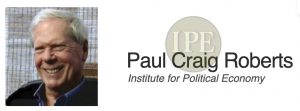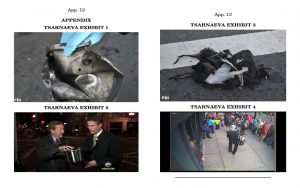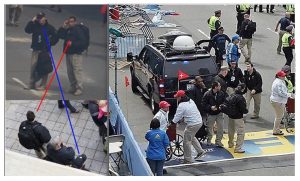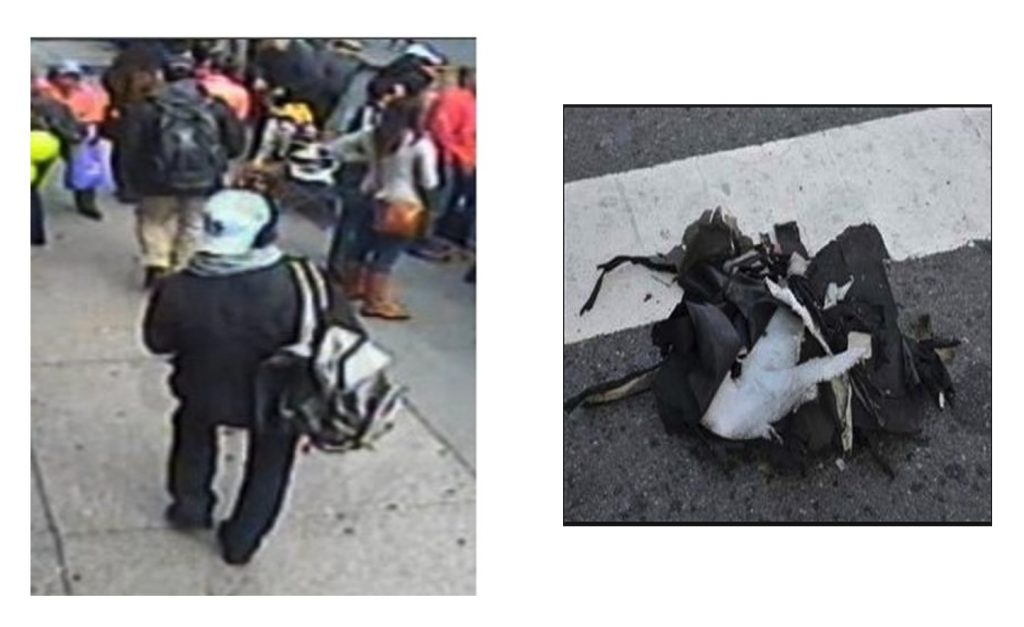Paul Craig Roberts
Eight and one-half years ago on April 15, 2013, there was a bombing claiming three victims at the Boston Marathon that had elements of a false flag event, such as crisis actors with pretend injuries. Two brothers, Tamerlan and Dzhokhar Tsarnaev were blamed for the bombing. Tamerlan apparently died while in police custody. Dzhokhar, shot by police, somehow managed to escape and was later found hiding under an overturned boat in someone’s back yard where he allegedly had written a confession in the dark on the side of the boat he was hiding under.
There were many anomalies about the bombing event, the getaway crimes allegedly associated with the brothers, and the capture of Tamerlan. The entire city of Boston, including airport, was shut down while police went house to house searching for Dzhokhar, a wounded 19 year old. Troops with tanks occupied the city. There was unethical intervention by US prosecutors with the Tsarnaev family. Media did not investigate and simply repeated the prepared narrative.
Many experts raised questions. The crisis actors were exposed. The unprecedented closing of an entire city while police ordered families out of their homes while their homes were searched were shown to be extreme measures just to capture a wounded teenager.
In other words, a thriller terrorist story was orchestrated to make certain the public saw the brothers as dangerous terrorists.
I covered the story at length on my website (see for example August 17, 2015). John Remington Graham saw that the brothers were being quickly convicted in the media, which raised the question whether media conviction was substituting for the lack of evidence.
After 8.5 years the case has reached the U.S. Supreme Court. John Remington Graham, an experienced prosecutor and defense attorney filed an argument for friends of the court before the U. S. Supreme Court, pointing out that the trial of Dzhokhar Tsarnaev ignored the exculpatory evidence that was never heard and proved him not guilty. Here is a statement from Graham’s argument:
“In sum, during the trial of Dzhokhar Tsarnaev in Boston, decisive exculpatory evidence of record or subject to judicial notice, and showing the actual innocence of Mr. Tsarnaev, was never called to the attention of the jury at trial, was left unmentioned by counsel on both sides, and was ignored by the presiding judge when the sentence of death was imposed. The same decisive exculpatory evidence was called to the attention of the circuit court by these friends of the court on motion granted, then again ignored.”
In November 2017, attorney Graham intervened with the US Court of Appeals for the First Circuit pointing out that exculpatory evidence had been ignored in Dzhokhar’s trial. The appeals court set aside the death penalty, not, however, on the basis of the ignored exculpatory evidence, but on the basis that Dzhokhar was under the influence of his older brother, Tamerlan, who was primarily responsible, and for the failure of the trial judge to question jurors whether they were influenced by extensive pre-trial news coverage.
Despite Biden’s opposition to the death penalty, the Biden justice (sic) department has asked the US Supreme Court to overrule the appeals court and to reinstate the death penalty. With the Boston Marathon Bombing narrative set in stone, the actual innocence of the accused has become irrelevant. The orchestrated narrative is likely to conclude with an act of judicial murder.

John Remington Graham on Dzhokhar
On the day of, or the day after the explosions, FBI investigators found a blown out black backpack near the postbox in front of the Forum Restaurant on Boylston Street in Boston. This blown-out black backpack had carried the pressure-cooker bomb which had been ignited by the culprit in the this case. It was necessary only to find who had carried the black backpack. We have two clues, the first being a video run by Whiskey Steak House on Boylston Street, which includes a still-frame showing Dzhokhar carry a light-weight white sack over his right shoulder at the time of the explosions, the other an article by Toni Cartalucci (cited on page App. 7 of our appendix) including photos of men in paramilitary gear who carried a black backpack which perfectly matched the blown out black backpack found near the postbox in front of the Forum Restaurant.
These facts were made known to the press and the judges. Everybody knew that Dzhokhar was not the culprit whose white sack did not match the black backpack found near the postbox in front of the Forum Restaurant, but that one of the men in paramilitary gear, identified in the photos published in the article by Mr. Cartalucci, were responsible. The men identified by Mr. Cartalucci were not approached or questioned by FBI investigators or other peace officers. Federal prosecutors went after Mr. Tsarnaev, even though he was carrying a white sack over his right shoulder at the time of the explosions, and could not have been guilty.
Court-appointed counsel for the accused in the federal district court in Boston, the First Circuit, and the Supreme Court were all aware of the same facts; they likewise knew with certainly that Mr. Tsarnaev could not have been guilty, and probably that the men identified by photos in the article by Mr. Cartalucci were responsible, but they nevertheless admitted that Mr. Tsarnaev was guilty, as the knew was not true. The case could and should have been dismissed by pre-trial motion in behalf of the accused, supported by Brady evidence. The lawyers on both sides refused to acknowledge these facts of which they were aware, and framed the issues in this case as if these facts did not exist. This charade is the central reality of this case. If you have questions or comments, please feel free to contact me. – John Remington Graham, a member of the bar of the United States Supreme Court (admitted August 5, 1971, #83902)
The Exculpatory Evidence

The Actual Perps in Boston

For more on Boston
Amazon.com–Surprise! Surprise!–banned my book about it, which has a dozen contributors, but it remains available at moonrockbooks.com:

